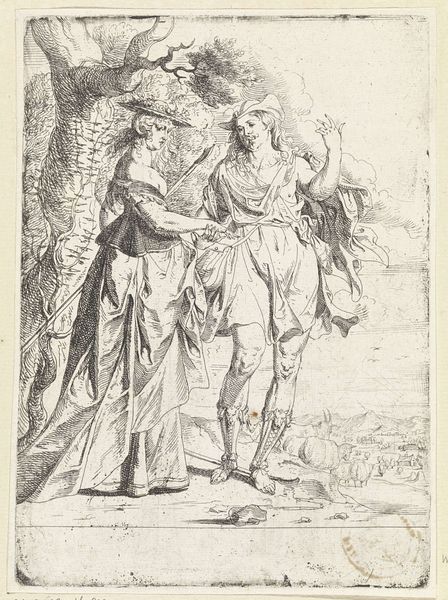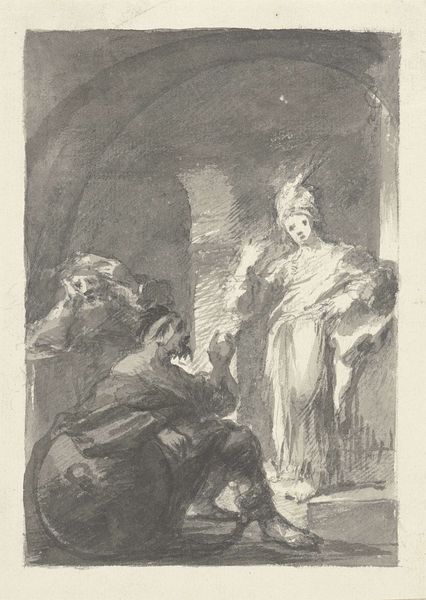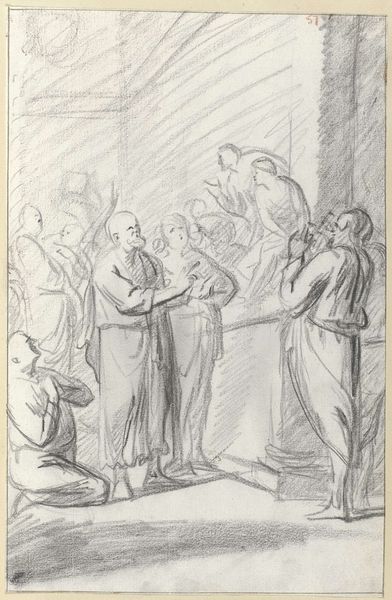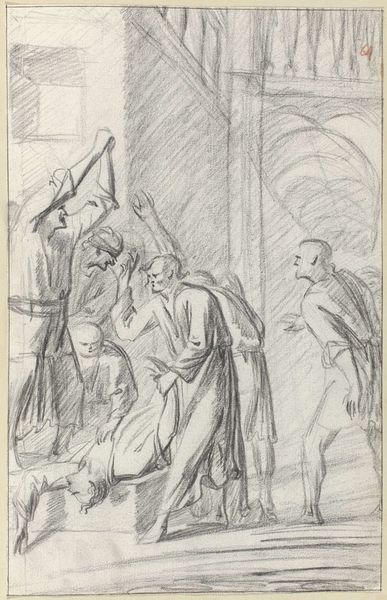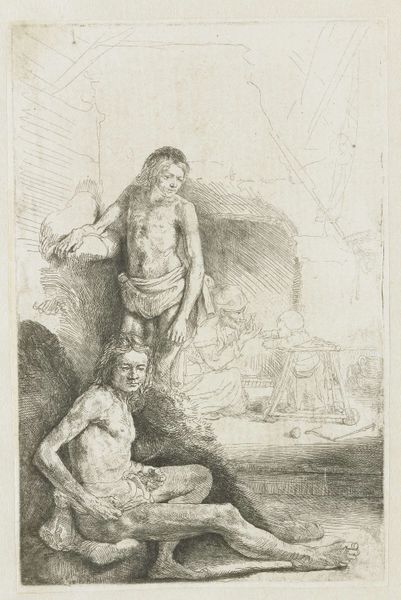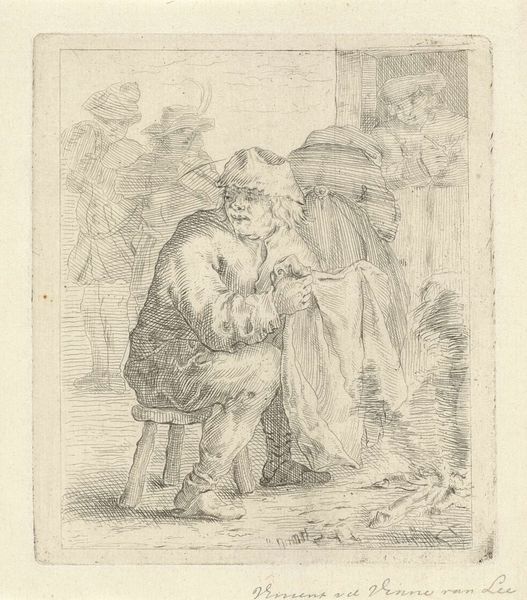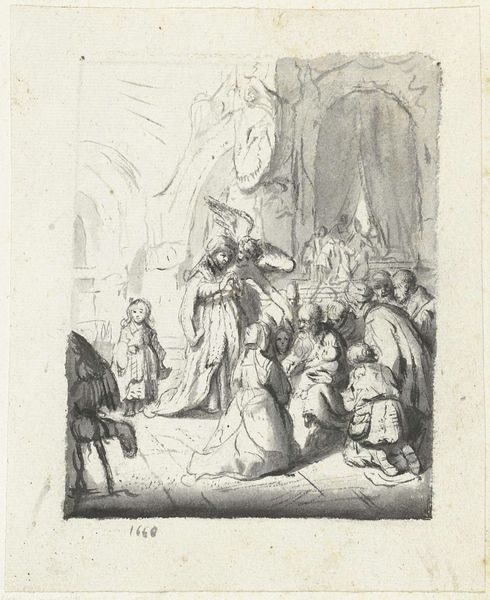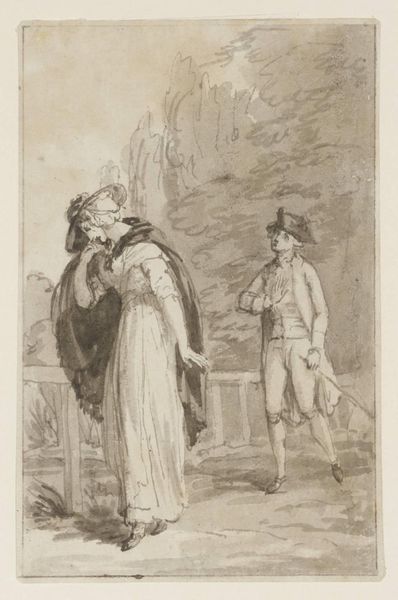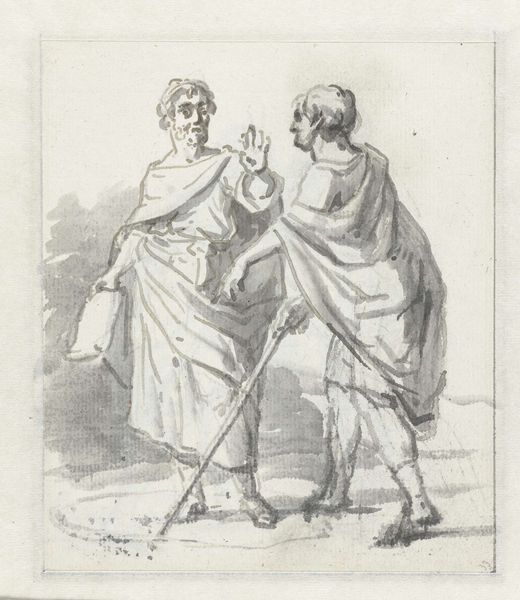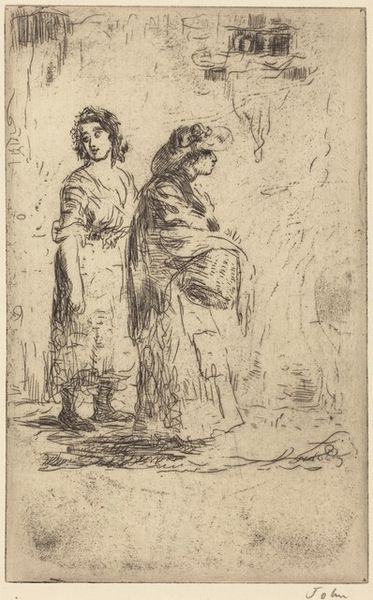
#
amateur sketch
#
light pencil work
#
quirky sketch
#
pencil sketch
#
incomplete sketchy
#
personal sketchbook
#
pen-ink sketch
#
sketchbook drawing
#
sketchbook art
#
initial sketch
Dimensions: height 195 mm, width 304 mm
Copyright: Rijks Museum: Open Domain
Editor: This is "Paulus voor Agrippa" by Pieter Fransz. de Grebber, created sometime between 1610 and 1652. It's a pencil sketch, quite delicate in its execution. What strikes me is its unfinished nature, like a glimpse into the artist’s process. What stands out to you? Curator: Immediately, I see the raw materials at play. De Grebber's choice of pencil and paper reveals a specific relationship to cost and accessibility. Pencil was far more economical than oils or even charcoal for a preliminary sketch like this, reflecting the social context of artistic production. How does the "unfinished" nature speak to the labor involved? Editor: I guess the sketch showcases a direct connection between the artist’s hand and the paper. We see the rapid marks, the areas left unrefined… it feels very immediate and less about idealized beauty and more about function. Curator: Precisely. It pushes against notions of ‘high art,’ doesn’t it? Here, we confront the working methods – the 'means of production', if you will – typically hidden beneath layers of paint and varnish. Where was this drawing created, and who was it intended for? Was it meant for public consumption? Editor: It seems more like a private study. Knowing that changes the way I value it. It shows that artistic work can sometimes also be 'process.' Curator: Consider, then, the act of sketching as labor itself, distinct from the completed "masterpiece." It underscores how the material conditions influence both the creation and our perception of art. By understanding the process, are we valuing 'labor' over artistic genius? Editor: Thinking about it that way does change things. I came in thinking of the finished painting, not what goes into sketching things beforehand and the resources you need. Thank you! Curator: A new awareness for both of us, I think. We both understand the intersection of materiality and the concept of labor a little better.
Comments
No comments
Be the first to comment and join the conversation on the ultimate creative platform.
